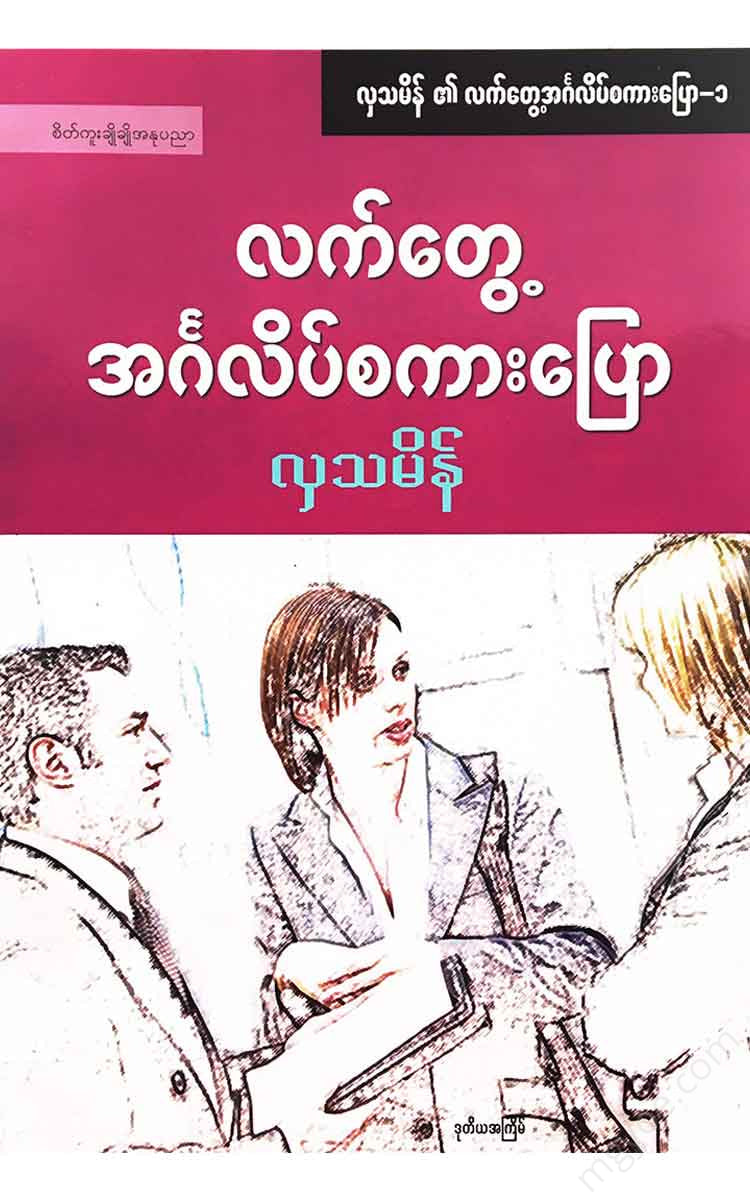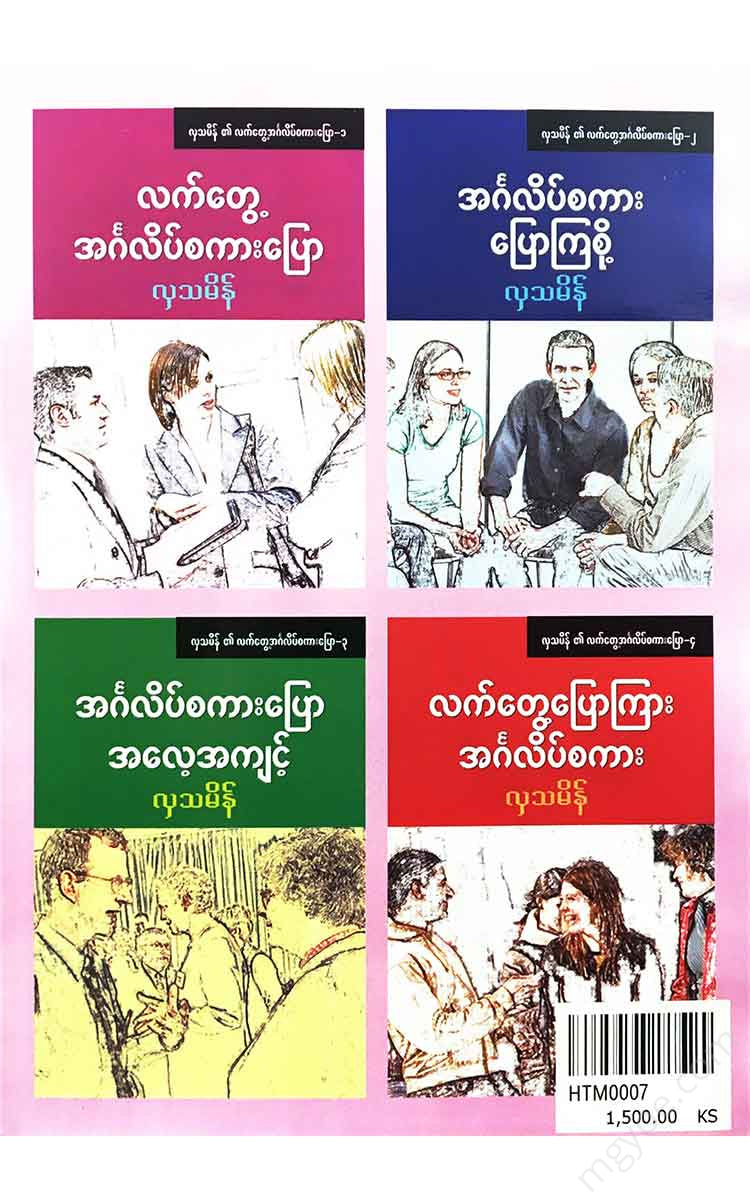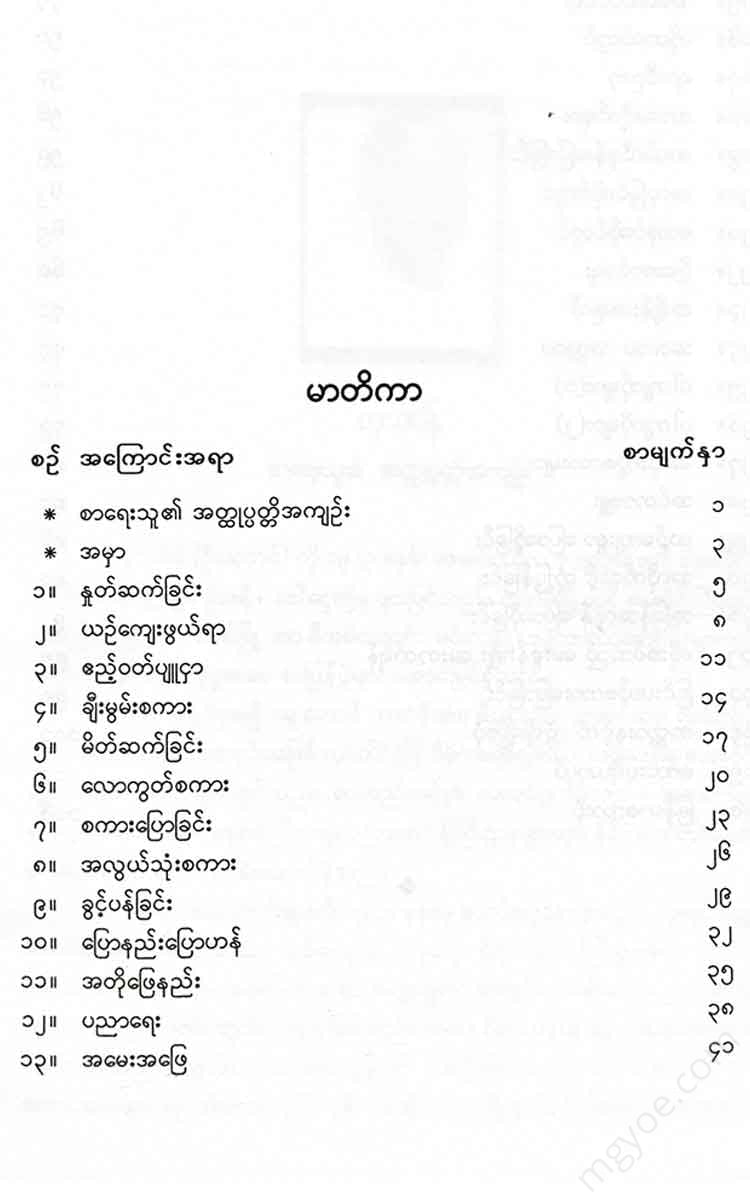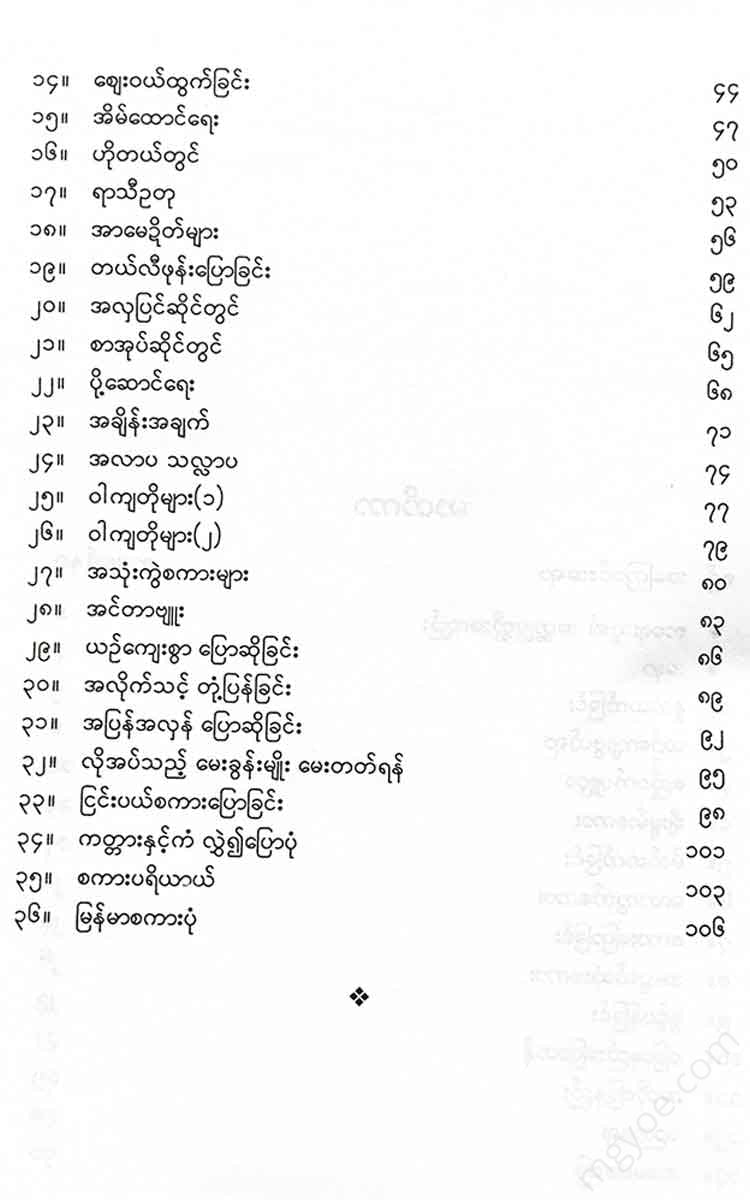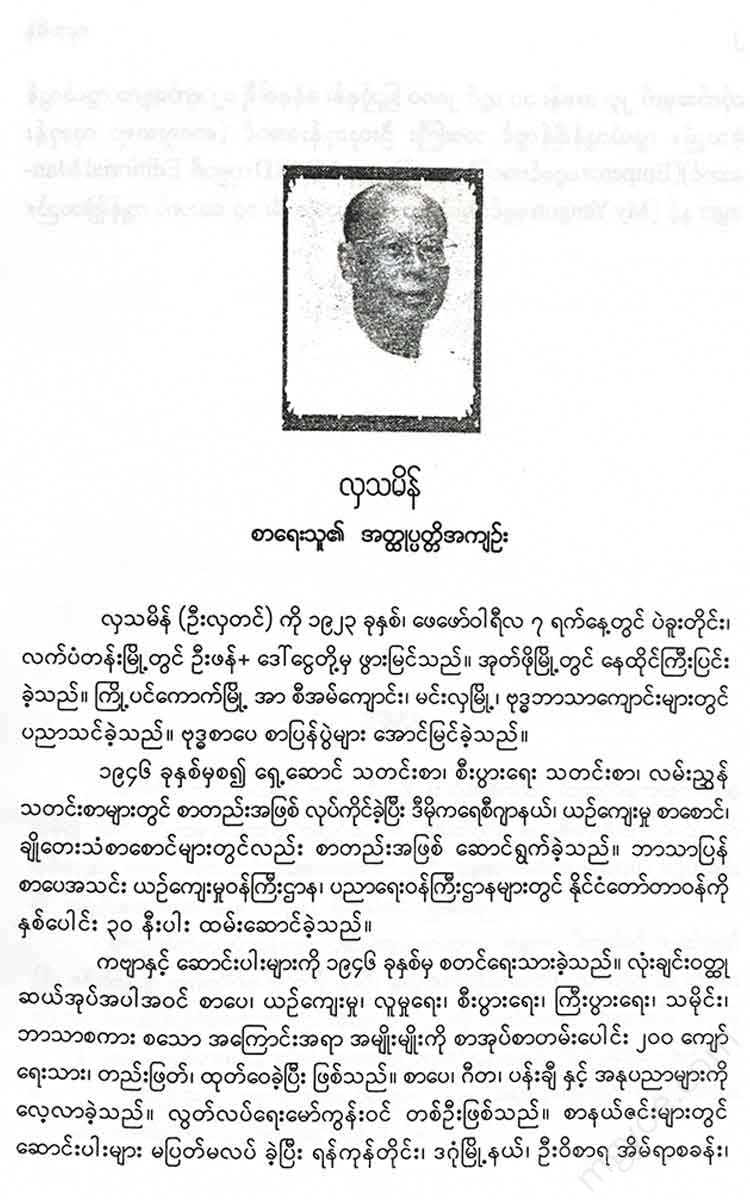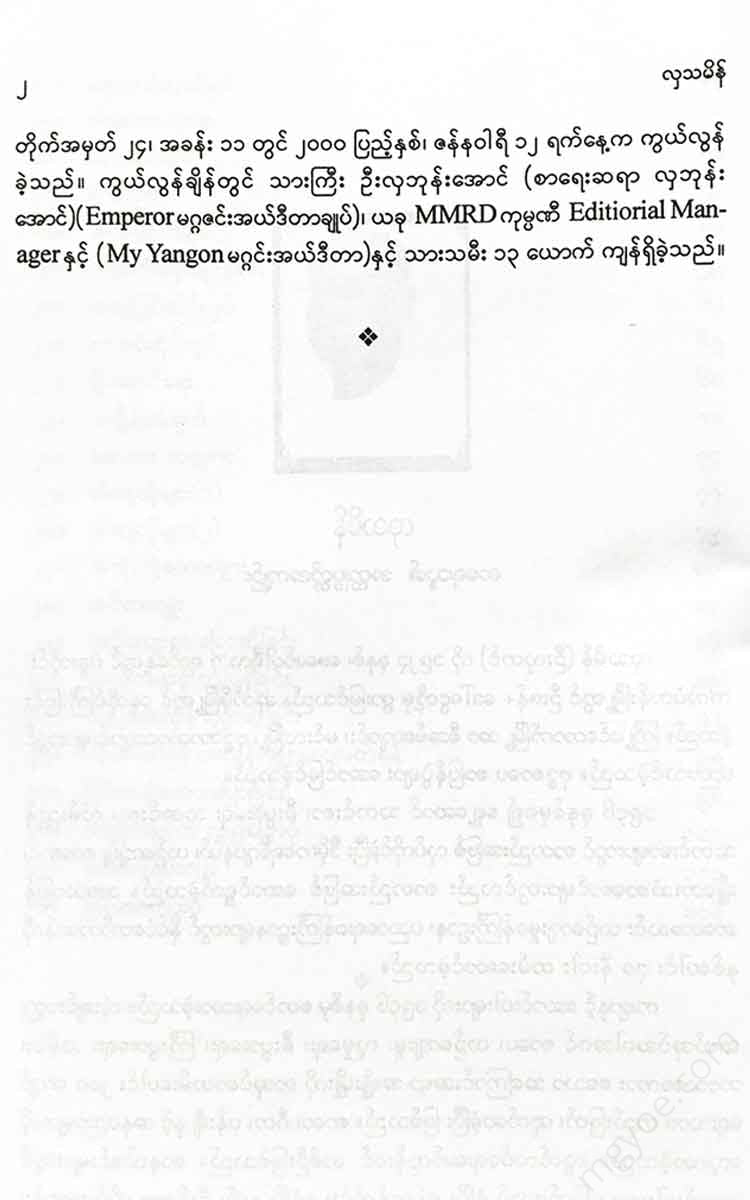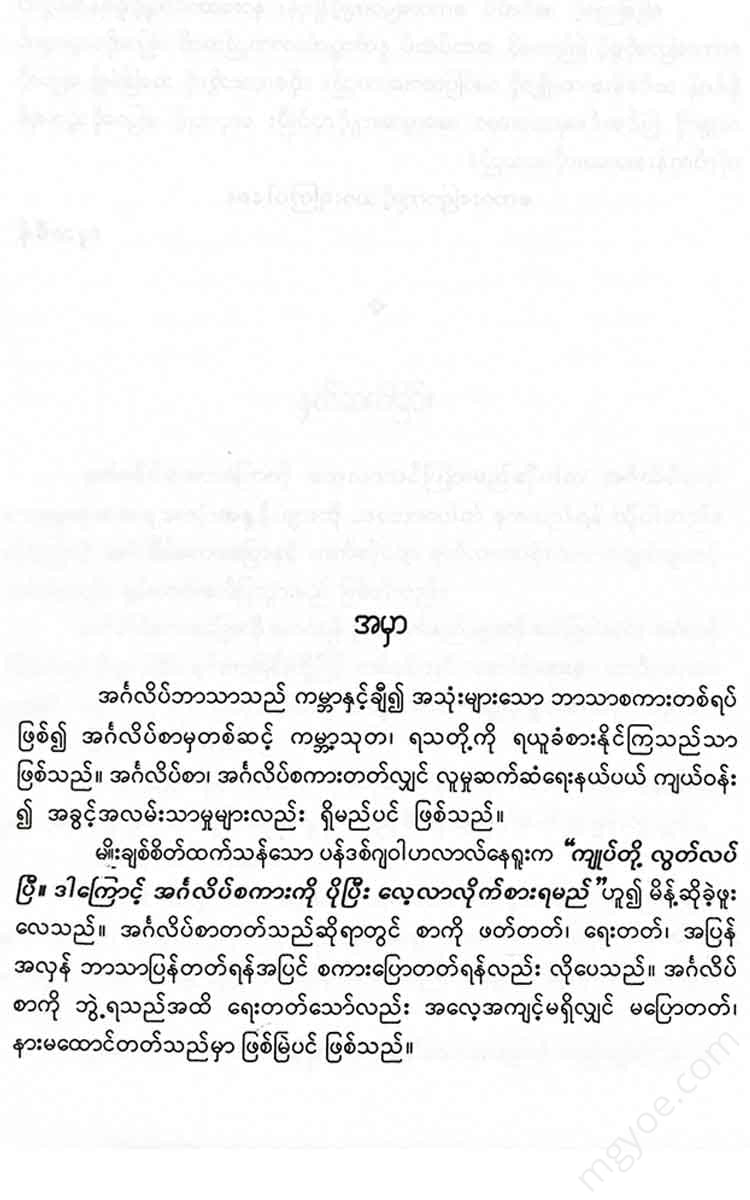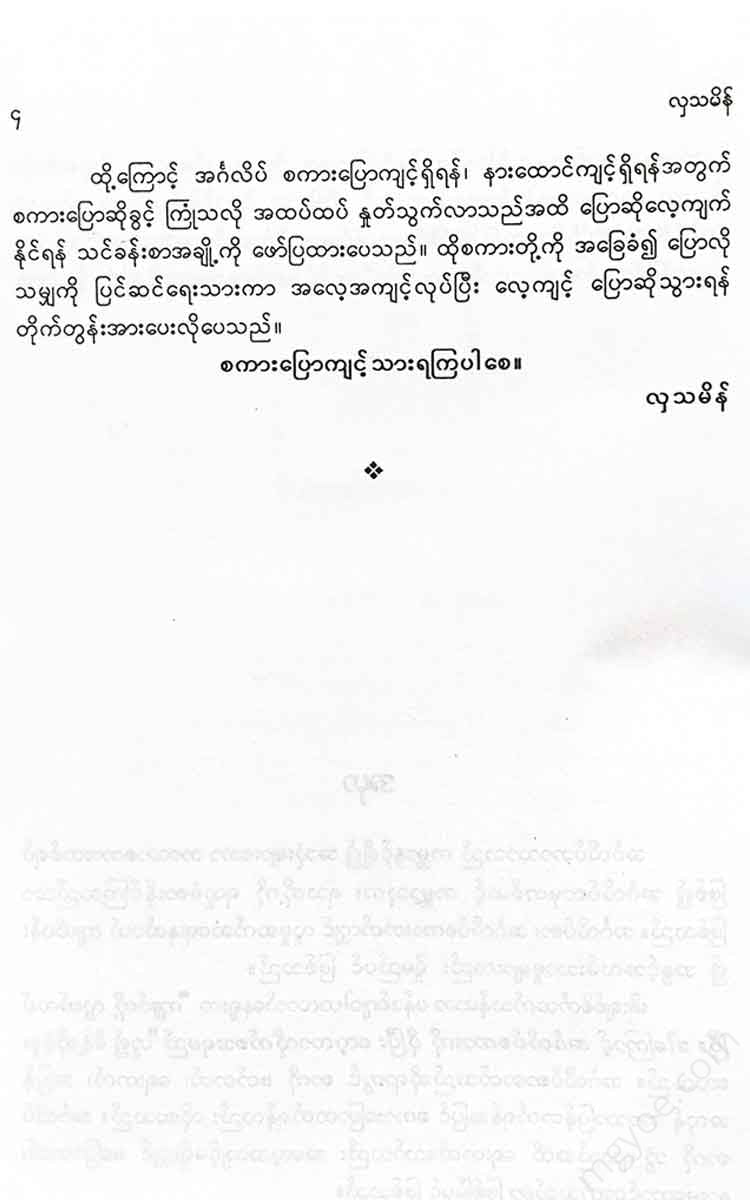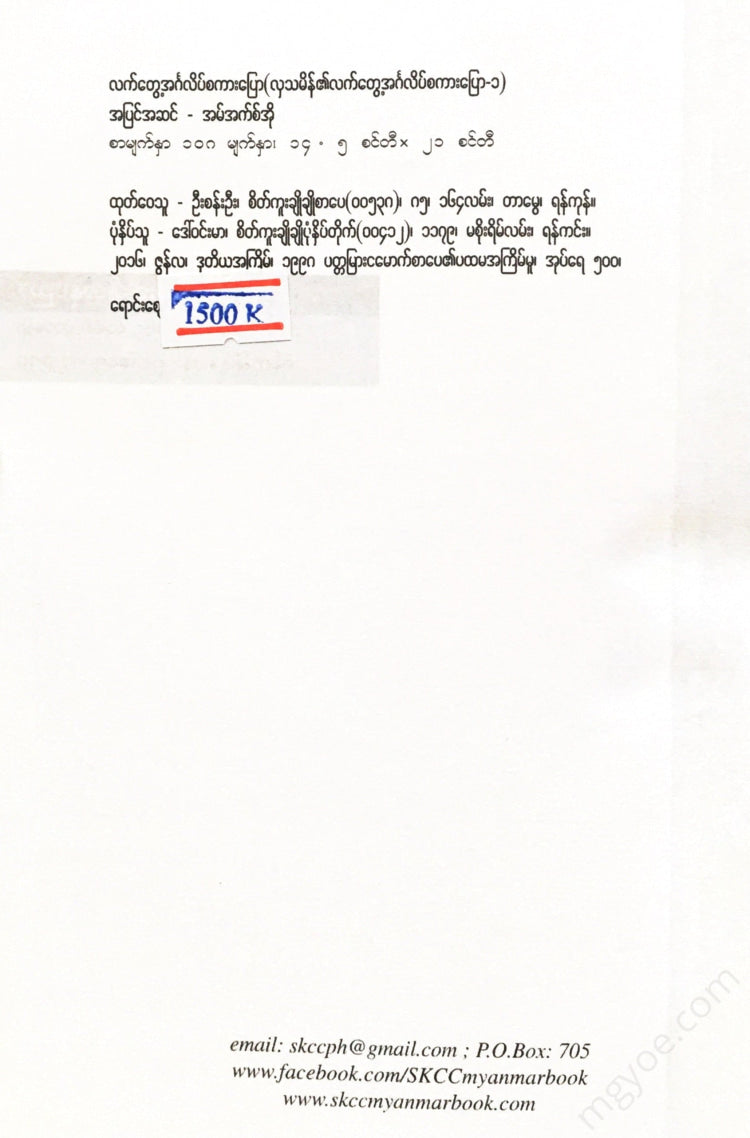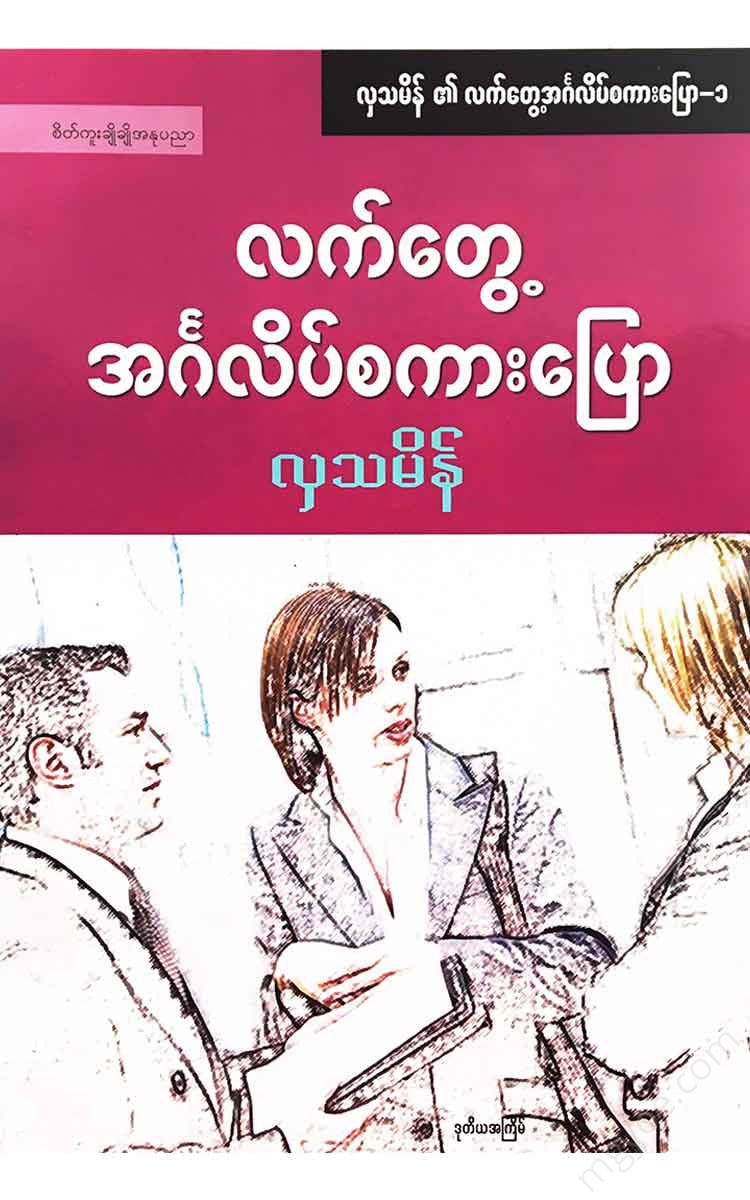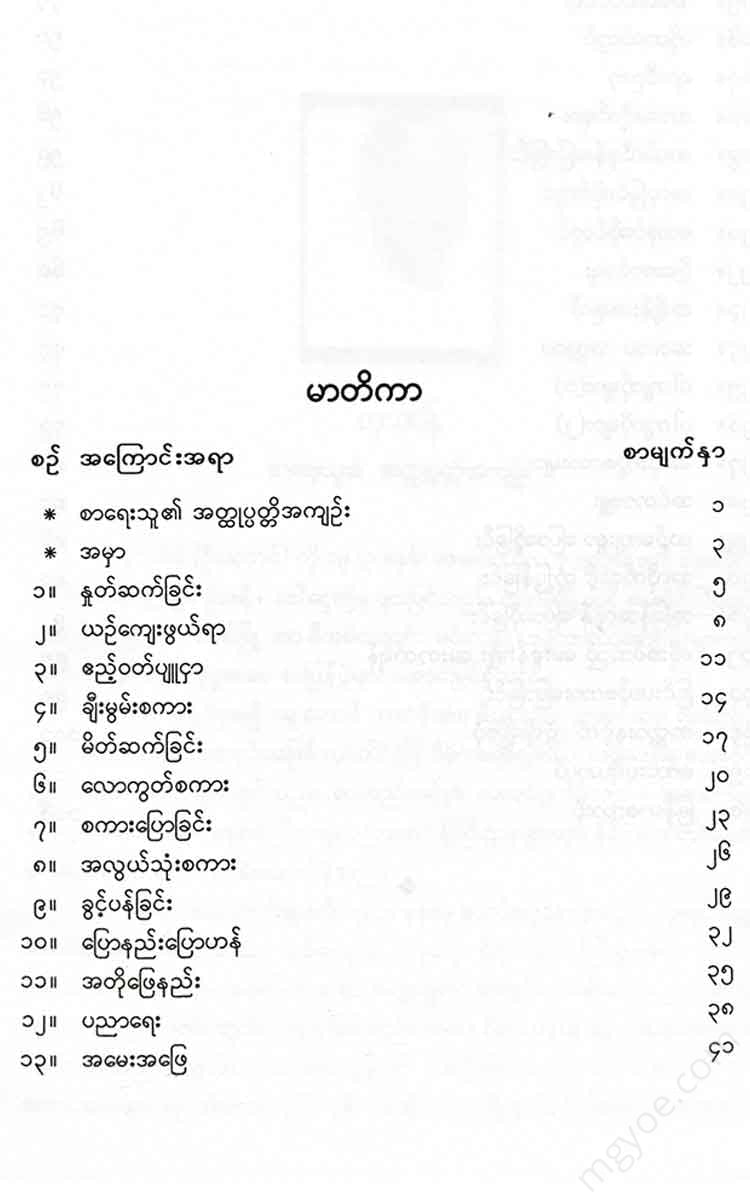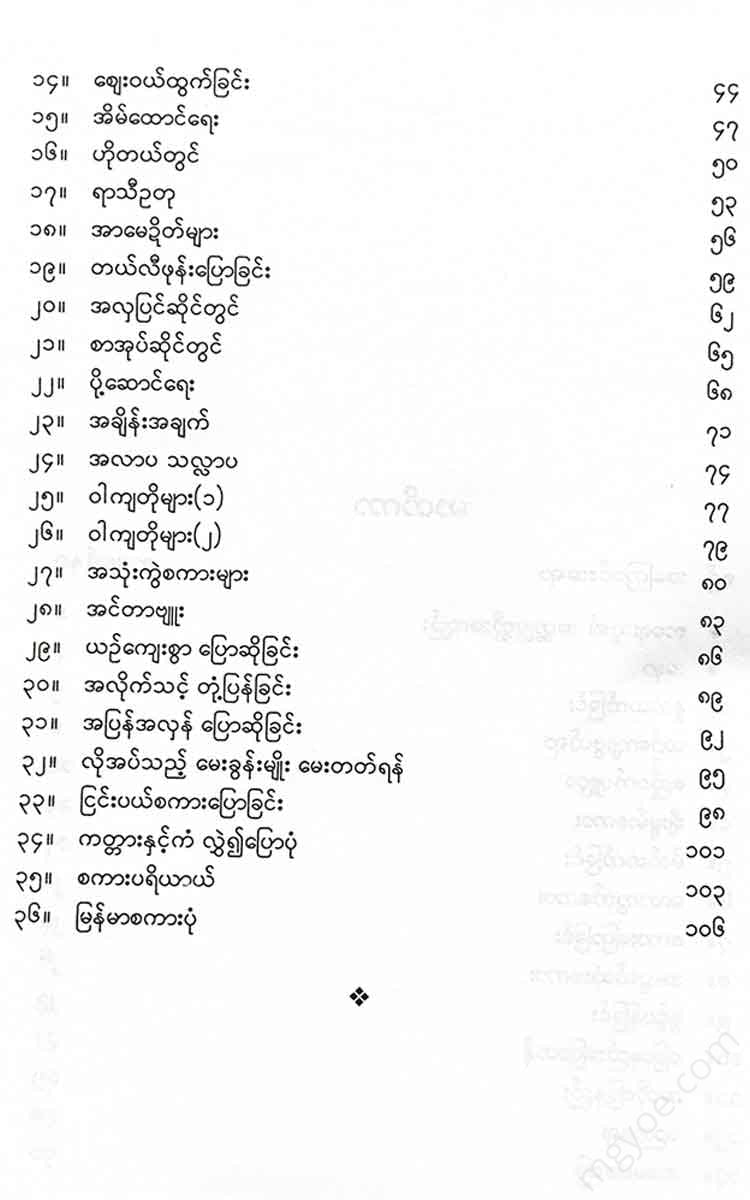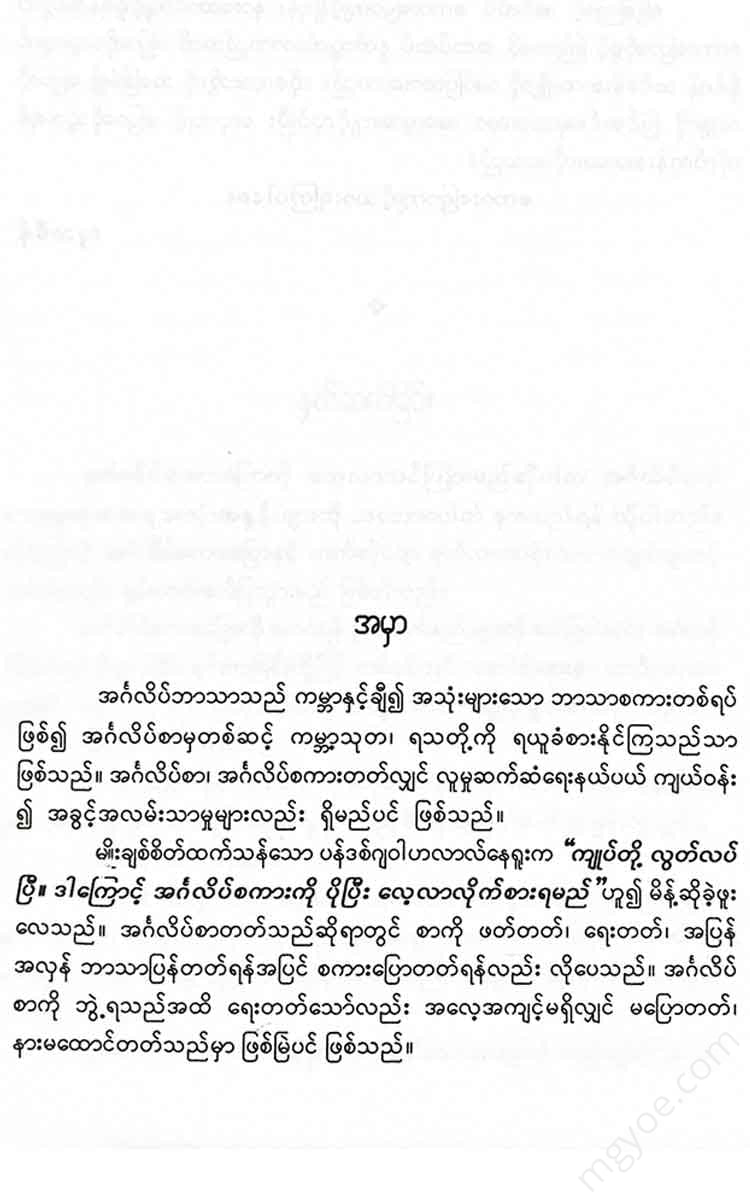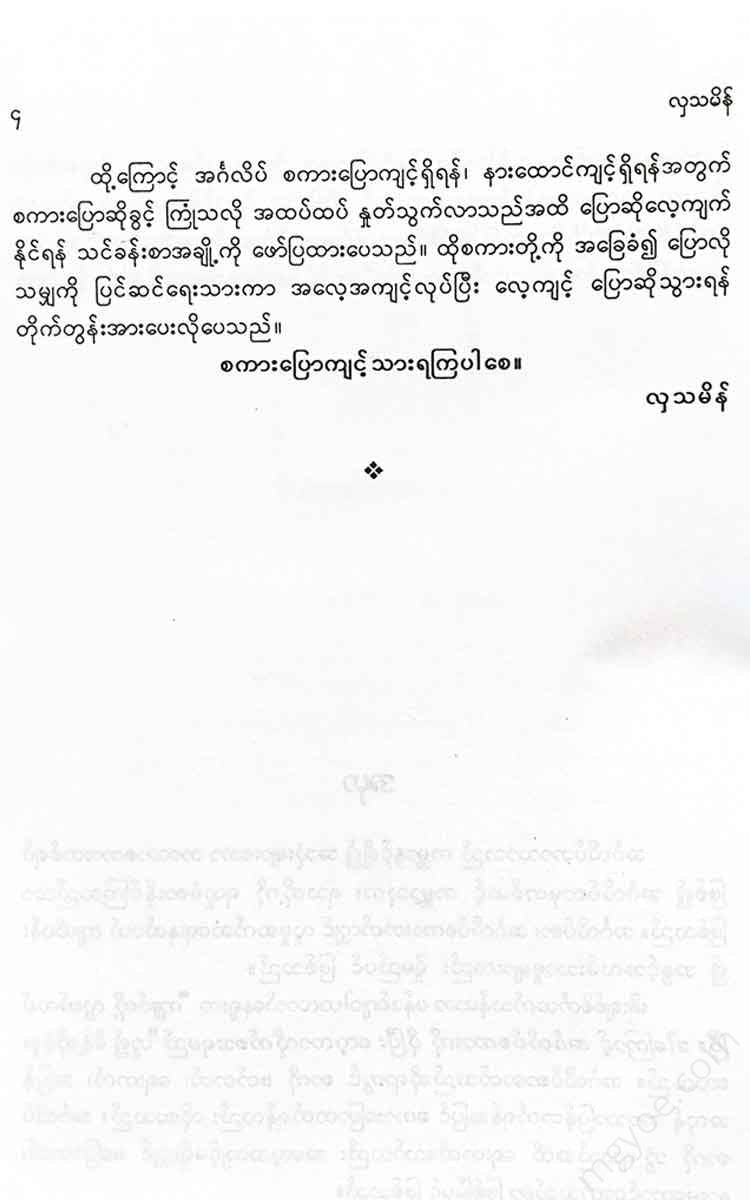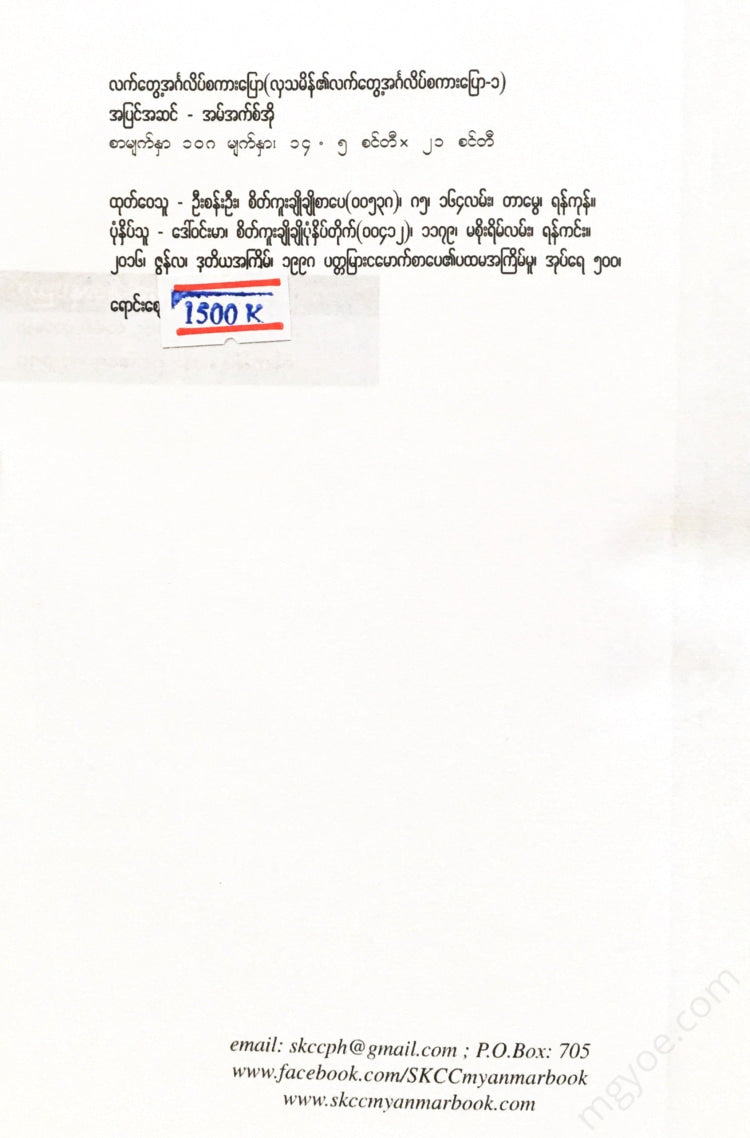စိတ်ကူးချိုချိုစာပေ
Hlasmaein - Speaking English with Hands 1
Hlasmaein - Speaking English with Hands 1
Couldn't load pickup availability
a greeting
If you are going to study and teach English, you need to understand the terms used in English culture. Therefore, we will explain the points that should be remembered when speaking English.
Here are some ways to greet someone to start speaking English. England has bad weather for many months of the year, with rain and snow, so we greet each other with "May the weather be good."
Good morning
Good morning, or a good morning to you. This greeting is said before noon, and in the afternoon...
Good afternoon
Good day is a greeting according to the time of day. The person being greeted says the same thing back. Some people do not use the abbreviation Good and just say Morning. The meaning is the same.
After that, they add a name they call each other by their friendship.
Good morning Maung Toe. If you are an older person or teacher who deserves respect, you should address them as Sir if they are male, or Madam if they are female. Lady is also used for a close female friend.
If you see me in the evening...
Good evening is a greeting. One thing to know is that Evening is for the night. In Myanmar, it is evening before sunset, but in England, during the long day, the sun disappears completely after 8 pm.
In English, good night is said as if you were saying goodbye when you are about to leave. During the day, you can say good bye or bye or just bye. In the evening, you can say good night. If you have nothing else to see that day, you can say good night in the evening.
When greeting in English, be aware of the time before you say hello and use węccydop Good morning shocol Good afternoon o poco according to the time. If you use Good morning only after noon, it can be awkward. You can use Good morning until noon. It will be natural to greet someone according to the time.
When saying goodbye, you should add the words "See you soon" in addition to the greeting.
See you on Monday.
See you in the morning.
See you again can be used as "See you again on Monday," "Let's meet in the morning," "See you again next time," etc. After saying goodbye...
(1) How do you do? (How are you?)
(2) How are you? (I am fine.)
(3) How are you lije? (How are you?)
etc. Continue to greet. The person being greeted (1) responds with the same greeting. (2) For Fine, thank you op oclosquagin I am quite well of ouros I am OK op. For (3) You can respond as if you are fluent in English. You can respond with I am doing well paloocoi Full of progress; excellent; wonderful etc. This is not a normal greeting. It is a personal question.
Polite
In English, it is not common to ask questions about personal matters.
How old are you?
How much do you earn?
These are questions that can only be asked when you become close friends.
There are polite phrases in conversation. They are used to communicate and be polite. If you ask for something...
Will you do me a favor? (Please)
Will you please? (About a goat)
If you don't mind (soojon:a89€)
May I trouble you?
Excuse me. (Excuse me)
etc. are said first. In English culture, it is very important not to disturb others, not to infringe on their personal freedom, and not to cause trouble to others. Therefore, it is polite to ask for permission in speech. Although Burmese are polite, they often speak politely and politely in speech. The listener also shows culture in speech.
You are welcome (ready to help, welcome)
It's a pleasure for me. (menoss miếcọn gaoz od:309 ខ្ញ)
As you please
Go ahead please.
They respond with words and politeness. They use a lot of apologies and advance apologies when speaking.
Always be grateful for something done for you. (Thank you) e cupos Thanks z. cupos A lot of thanks over is used in a very polite way.
If you ask for directions, you should say “Thank you.” If someone offers you something, you should say “Thank you.” At the very least, if someone asks you to “Have a coffee,” you should say “No, thanks.” You should say “No, thanks.” You should say “No, thanks.” You should say “No, thanks.” Otherwise, you might end up saying “No, thanks.”
May I use your pen. Please.
If you ask me to use your pen for a moment...
Yes, certainly (take it) (I want it)
Please, no objection.
As you pleased. (Use as you like) etc. You can also say it in a rich way. The user..
Thanks a lot.
Thank you so much.
You are so kind.
etc. In English, you should only remember the meaning. It is not fixed in a fixed sentence. You can speak according to your own knowledge.
Always be polite when communicating in English. Show interest in the speaker. Finally, say thank you.
If he can't provide the help he asks for...
I am afraid... I cannot help you.
I don't think, I can help you.
Sorry, it is out of my ability
etc. They respond with, “I'm afraid I can't help,” “I don't think I can help,” “I'm sorry, it's something I can't do,” etc. They don't usually speak bluntly.
Sorry, I don't know.
At least say sorry before saying you don't know. Say "I don't know," "I can't," "I don't have," or "I can't do anything," and add "Sorry." Don't be afraid to use "Sorry" a lot.
